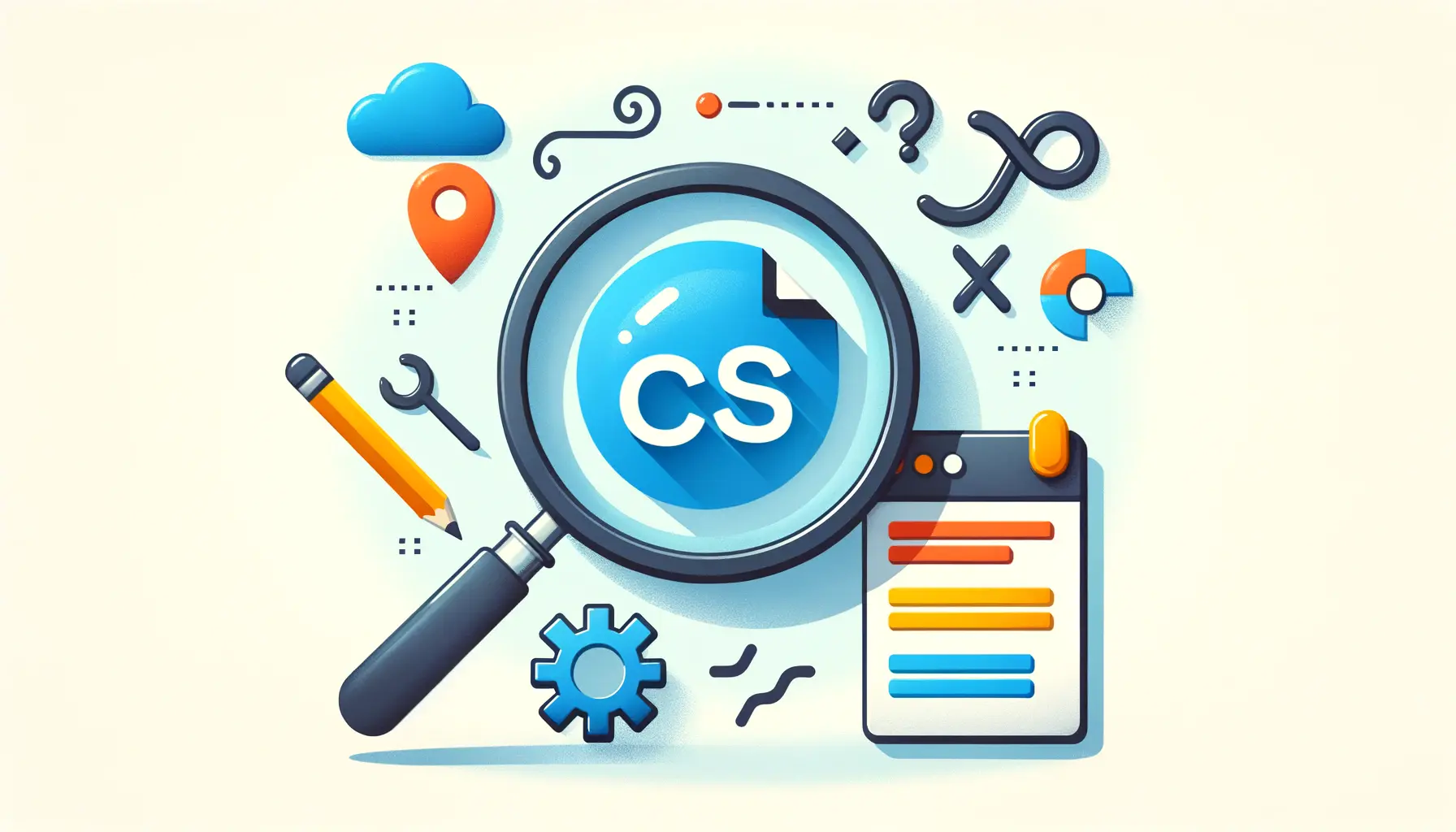The digital landscape is evolving, and with it, the strategies for SaaS (Software as a Service) companies to stand out in a crowded market.
SEO, or Search Engine Optimization, is a critical tool in the arsenal of SaaS businesses aiming to increase their visibility online, attract more qualified leads, and convert them into loyal customers.
A well-executed SEO strategy can be the difference between a SaaS company that thrives and one that struggles to be seen.
This article delves into a four-step strategy specifically tailored for SaaS companies looking to grow their SEO presence and, by extension, their business.
Understanding the unique challenges and opportunities that SaaS companies face in the digital realm is crucial.
Unlike traditional businesses, SaaS companies operate on a model that relies heavily on online visibility and engagement to drive subscriptions and recurring revenue.
This makes SEO not just a marketing tactic but a foundational element of their growth strategy.
By focusing on a four-step SEO strategy, SaaS companies can effectively enhance their online presence, target their ideal customers more efficiently, and build a sustainable path to growth.
- Identifying Your Target Audience and Their Search Intent
- Optimizing Website Structure and User Experience
- Creating Compelling Content for SaaS SEO
- Link Building Strategies for SaaS Companies
- Measuring and Analyzing SEO Performance
- Adapting to SEO Changes and Trends
- Leveraging Analytics for Strategic SEO Insights
- Empowering SaaS Growth Through Strategic SEO
- FAQs on Four-Step Strategy for SaaS SEO Growth
Identifying Your Target Audience and Their Search Intent
Before diving into keywords or content creation, the first step in a successful SaaS SEO strategy is to identify your target audience and understand their search intent.
Knowing who your ideal customers are, what problems they are trying to solve, and how they use search engines to find solutions is essential.
This understanding will guide your keyword research, content creation, and overall SEO strategy, ensuring that your efforts are focused and effective.
Search intent, or the reason behind a search query, is particularly important for SaaS companies.
Users might be looking for information, comparing different SaaS solutions, or ready to subscribe to a service.
By identifying the various types of search intent related to your product, you can tailor your content to meet these needs at different stages of the buyer’s journey.
This approach not only improves your SEO performance but also enhances the user experience by providing valuable information that meets users’ specific needs.
Conducting Thorough Keyword Research
Once you have a clear understanding of your target audience and their search intent, the next step is to conduct thorough keyword research.
This involves identifying the keywords and phrases that your potential customers are using to find solutions online.
Utilizing tools like Google Keyword Planner, Ahrefs, or SEMrush can provide insights into search volume, competition level, and relevance of keywords to your SaaS offering.
It’s important to focus on a mix of broad and long-tail keywords.
Broad keywords might have a higher search volume but are often more competitive and less specific.
Long-tail keywords, on the other hand, are more specific and indicate a higher intent to subscribe or purchase.
By targeting a combination of these keywords, you can attract a wider audience while also honing in on users who are further along in the decision-making process.
Incorporating keywords naturally into your website’s content, meta descriptions, and titles not only helps improve your search engine rankings but also makes your content more relevant and useful to your target audience.
Optimizing Website Structure and User Experience
The structure of your SaaS website plays a significant role in both user experience (UX) and SEO.
A well-organized site with a clear hierarchy makes it easier for search engines to crawl and index your pages, improving your visibility in search results.
Moreover, a website that provides a seamless and intuitive user experience can significantly reduce bounce rates and encourage visitors to explore your offerings further.
Key elements to focus on include simplifying your navigation, ensuring fast load times, and making your site mobile-friendly.
With the increasing use of smartphones for internet access, a mobile-responsive design is no longer optional.
Google’s mobile-first indexing means that your site’s mobile version will be considered the primary version when determining rankings.
Therefore, optimizing your website’s structure and user experience is not just about aesthetics but is a crucial part of your SEO strategy.
Implementing Technical SEO Best Practices
- Secure Sockets Layer (SSL): Ensure your website is secure by using HTTPS. This not only protects your users’ data but is also a ranking factor for Google.
- Site Speed: Use tools like Google PageSpeed Insights to analyze and improve your website’s loading times. Slow websites can lead to higher bounce rates and lower rankings.
- Mobile Responsiveness: Test your website across different devices to ensure it’s fully responsive. A mobile-friendly website is essential for ranking well in search engine results.
- Structured Data: Implement structured data (schema markup) to help search engines understand the content of your pages better. This can also lead to rich snippets in search results, improving click-through rates.
By focusing on these technical SEO aspects, you can create a solid foundation for your website that supports all other SEO efforts.
Remember, the goal is to make it as easy as possible for search engines to find, index, and rank your content while providing a great experience for users.
Creating a Sitemap and Using Robots.txt
A sitemap is a file where you provide information about the pages, videos, and other files on your site, and the relationships between them.
Search engines like Google read this file to more intelligently crawl your site.
A robots.txt file tells search engine crawlers which pages or files they can or can’t request from your site.
It’s used mainly to avoid overloading your site with requests; it’s not a mechanism for keeping a web page out of Google.
Managing these files correctly can aid in faster and more accurate indexing of your site.
Regularly updating your sitemap and reviewing your robots.txt file can prevent crawl errors and ensure that search engines are indexing your most important pages.
Creating Compelling Content for SaaS SEO
Content is the cornerstone of any successful SEO strategy, especially for SaaS companies.
The goal is to create valuable, engaging content that addresses the needs and questions of your target audience.
This not only helps in attracting and retaining users but also establishes your brand as an authority in your niche.
A well-thought-out content strategy can significantly boost your SEO efforts by increasing your website’s visibility and attracting backlinks.
When creating content for your SaaS business, focus on the problems your software solves and how it benefits users.
Use the keywords identified during your research phase to guide your content creation, ensuring that it is optimized for search engines while still being engaging and informative for readers.
Types of Content That Drive SaaS SEO Success
- Blog Posts: Regularly publish informative blog posts that answer common questions, provide solutions, and offer insights related to your SaaS product and industry.
- Case Studies: Showcase real-life examples of how your software has helped other businesses overcome challenges. This not only provides social proof but also targets keywords related to your product’s benefits.
- Guides and Ebooks: Create in-depth guides and ebooks that delve deeper into topics relevant to your audience. These can be used as lead magnets to capture email addresses while also improving your SEO.
- Product Tutorials: Develop tutorials and how-to guides that help users get the most out of your software. Video content can be particularly effective and can be optimized for search engines through titles, descriptions, and transcripts.
Remember, the key to creating content that ranks well in search engines and resonates with your audience is to focus on quality over quantity.
Each piece of content should be carefully researched, well-written, and thoroughly optimized for SEO.
Utilizing Keywords in Your Content Strategy
Incorporating keywords into your content is crucial, but it must be done naturally.
Keyword stuffing, or overusing keywords, can harm your SEO efforts and lead to a poor user experience.
Instead, focus on integrating keywords seamlessly into your content, using them in titles, headings, and throughout the body of your articles where they make sense contextually.
Consider the user’s intent behind each keyword and create content that addresses that intent. This approach not only helps with SEO but also ensures that your content is genuinely useful to your audience.
Link Building Strategies for SaaS Companies
Link building is a critical component of any SEO strategy, including for SaaS businesses.
High-quality backlinks from reputable sites signal to search engines that your content is valuable and authoritative, which can significantly boost your rankings.
However, building these links requires a strategic approach that focuses on creating valuable content and fostering relationships within your industry.
For SaaS companies, link building should not just be about getting any link, but about acquiring links that are relevant to your niche and can drive qualified traffic to your site.
This involves a combination of creating link-worthy content and outreach efforts to industry influencers, bloggers, and other websites that are relevant to your target audience.
Effective Link Building Techniques
- Guest Blogging: Write and publish articles on other reputable websites in your industry. This not only helps in acquiring backlinks but also in reaching a wider audience.
- Content Collaboration: Collaborate with other businesses or influencers to create content that includes a mention and link back to your website.
- Resource Link Building: Create valuable resources such as tools, templates, or comprehensive guides that other sites will want to link to as a reference.
- Broken Link Building: Identify broken links on relevant websites and offer your content as a replacement.
Remember, the goal of link building is not just to increase the number of backlinks but to improve the overall authority and trustworthiness of your website.
Focus on building relationships and providing value to both your partners and your audience.
Monitoring Your Backlink Profile
As you implement your link building strategy, it’s important to monitor your backlink profile regularly.
Use tools like Ahrefs or Moz to track the backlinks you’re acquiring and assess their quality.
Be on the lookout for any spammy or low-quality links that could harm your SEO efforts and consider using Google’s Disavow Tool if necessary.
Quality over quantity is the mantra for successful link building. Focus on acquiring backlinks from high-authority sites within your niche to maximize the impact on your SEO.
Measuring and Analyzing SEO Performance
For SaaS companies, the ability to measure and analyze SEO performance is crucial to understanding the effectiveness of their strategies and making informed decisions for future optimizations.
Tracking the right metrics and using the appropriate tools can provide insights into what’s working, what isn’t, and where there are opportunities for improvement.
It’s important to establish a set of key performance indicators (KPIs) that align with your business goals.
These KPIs should help you gauge your SEO strategy’s impact on organic traffic, lead generation, and ultimately, customer acquisition and retention.
Key SEO Metrics for SaaS Companies
- Organic Traffic: The number of visitors coming to your site through search engines. An increase in organic traffic is a good indicator of successful SEO.
- Keyword Rankings: The position of your website’s pages in the search engine results pages (SERPs) for targeted keywords. Higher rankings can lead to more visibility and traffic.
- Bounce Rate: The percentage of visitors who leave your site after viewing only one page. A high bounce rate may indicate that your content is not meeting the needs of your audience.
- Conversion Rate: The percentage of visitors who take a desired action on your site, such as signing up for a trial or making a purchase. This metric helps assess the quality of your traffic and the effectiveness of your site in encouraging conversions.
Utilizing tools like Google Analytics, Google Search Console, and SEMrush can help track these metrics and provide valuable insights into your SEO performance.
Regular analysis of these metrics allows you to refine your strategy, make data-driven decisions, and continuously optimize your SEO efforts for better results.
Conducting SEO Audits
Periodic SEO audits are essential for identifying both the strengths and weaknesses of your SEO strategy.
An audit can uncover technical issues, on-page optimization opportunities, content gaps, and areas where your link-building efforts can be improved.
By addressing these issues, you can enhance your site’s SEO performance and better position your SaaS company for growth in the competitive online landscape.
Regularly measuring and analyzing your SEO performance is key to staying ahead in the ever-evolving digital market. Use insights from your data to continuously refine and improve your SEO strategy for sustained growth.
Adapting to SEO Changes and Trends
The digital marketing landscape, particularly SEO, is in a constant state of flux.
Search engines frequently update their algorithms to improve the relevance and quality of their search results.
For SaaS companies, staying abreast of these changes and adapting their SEO strategies accordingly is crucial for maintaining and improving their search engine rankings and visibility.
One of the key aspects of adapting to SEO changes is the willingness to evolve your content and technical SEO strategies based on new trends and algorithm updates.
This might involve revisiting your keyword strategy, updating old content to keep it relevant, or making technical adjustments to your website.
Staying Informed on SEO Best Practices
To effectively adapt to SEO changes, it’s important for SaaS companies to stay informed about the latest SEO best practices, trends, and algorithm updates.
This can be achieved by following reputable SEO blogs, attending webinars and conferences, and participating in SEO communities.
Knowledge gained from these resources can be invaluable in tweaking your SEO strategy to align with the latest guidelines and best practices.
Additionally, leveraging SEO tools that offer insights into algorithm changes and your website’s performance can help you quickly identify areas that require adjustments.
Tools like Moz’s Algorithm Change History or Google’s Search Console can alert you to shifts in the SEO landscape that might affect your site.
Embracing New Technologies and Platforms
As technology evolves, new platforms and user behaviors emerge.
Voice search, mobile optimization, and the rise of artificial intelligence in search algorithms are just a few examples of trends that have significantly impacted SEO strategies in recent years.
SaaS companies should be proactive in embracing these new technologies and platforms, optimizing their content and SEO strategies to cater to these emerging trends.
For instance, optimizing for voice search may involve focusing on more conversational keywords and phrases, as users tend to use natural language when using voice assistants.
Similarly, ensuring your website is optimized for mobile devices is no longer optional, given the significant volume of searches conducted on mobile.
Adapting to SEO changes and trends is not just about reacting to search engine updates. It’s about anticipating the future direction of technology and user behavior and adjusting your strategy to stay ahead of the curve.
Leveraging Analytics for Strategic SEO Insights
Analytics play a pivotal role in shaping and refining the SEO strategy of SaaS companies.
By leveraging analytics, businesses can gain deep insights into their website’s performance, understand user behavior, and identify opportunities for optimization.
The strategic use of analytics enables SaaS companies to make data-driven decisions that enhance their SEO efforts and contribute to their overall growth.
Integrating analytics into your SEO strategy involves more than just monitoring traffic and rankings.
It requires a comprehensive approach that examines various aspects of your website and its visitors.
This data-driven approach ensures that every decision you make is informed by actual user behavior and performance metrics.
Key Analytics Metrics to Monitor
- User Engagement: Metrics such as time on site, pages per session, and bounce rate can provide insights into how engaged users are with your content.
- Traffic Sources: Understanding where your traffic is coming from (organic search, direct, social media, etc.) can help you tailor your SEO and content strategies to maximize reach and engagement.
- Conversion Rates: Tracking how many visitors complete desired actions (sign-ups, downloads, purchases) can help you assess the effectiveness of your SEO in driving business goals.
- Keyword Performance: Analyzing which keywords are driving traffic and conversions can inform your content strategy and help you focus on the most valuable search terms.
Utilizing Analytics Tools for SEO
Several analytics tools are available that can provide valuable insights into your website’s SEO performance.
Google Analytics is a powerful and widely used tool that offers a wealth of information about your website’s traffic, user behavior, and conversion metrics.
Google Search Console, on the other hand, provides specific insights into your site’s visibility on Google, including search queries, click-through rates, and indexing status.
Other tools like SEMrush and Ahrefs offer comprehensive SEO analytics, including keyword research, backlink analysis, and competitor insights.
By regularly reviewing and analyzing these metrics, SaaS companies can identify trends, uncover issues, and discover opportunities for improvement.
This ongoing analysis is crucial for continuously optimizing your SEO strategy and ensuring that your efforts are aligned with your business objectives and user needs.
Analytics offer a roadmap for SEO success, guiding SaaS companies through the complexities of digital marketing with actionable insights and strategic direction. Embrace analytics as a core component of your SEO strategy to drive sustained growth and competitive advantage.
Empowering SaaS Growth Through Strategic SEO
The journey through the four-step strategy for SaaS SEO growth underscores the multifaceted approach required to navigate the competitive digital landscape effectively.
For SaaS companies, SEO is not just a marketing tool; it’s a vital component of a comprehensive growth strategy.
By understanding your audience, optimizing your website, creating compelling content, building quality backlinks, and leveraging analytics, you can significantly enhance your online presence and drive sustainable growth.
Key Takeaways for SaaS SEO Success
Reflecting on the strategies discussed, several key takeaways emerge that are essential for SaaS companies aiming to leverage SEO for growth:
- Deep understanding of target audience and search intent forms the foundation of a successful SEO strategy.
- Technical optimization and user experience are critical for both search engine rankings and user engagement.
- Quality content that addresses user needs and incorporates targeted keywords naturally is indispensable for attracting and retaining users.
- Strategic link building enhances website authority and drives targeted traffic, contributing to higher search engine visibility.
- Continuous measurement, analysis, and adaptation based on SEO analytics ensure that strategies remain effective and aligned with business goals.
As the digital ecosystem evolves, so too must the SEO strategies of SaaS companies.
Staying informed about the latest SEO trends, algorithm updates, and best practices is crucial for maintaining a competitive edge.
Embracing new technologies, platforms, and user behaviors will enable SaaS businesses to adapt their SEO strategies effectively and capitalize on emerging opportunities.
Conclusion: The Path Forward for SaaS SEO
In conclusion, the four-step strategy for SaaS SEO growth offers a robust framework for SaaS companies to enhance their online visibility, attract more qualified leads, and convert them into loyal customers.
However, the path to SEO success requires more than just following a set of steps; it demands a commitment to continuous learning, adaptation, and innovation.
By embracing a holistic and adaptive approach to SEO, SaaS companies can not only achieve their growth objectives but also build a strong online presence that stands the test of time.
Remember, SEO is a marathon, not a sprint.
It takes time, effort, and persistence to see results.
But with the right strategy, tools, and mindset, your SaaS company can harness the power of SEO to drive meaningful growth and success in the digital age.
Want your website to top Google search rankings? Leave the SEO to our professional agency!
FAQs on Four-Step Strategy for SaaS SEO Growth
Explore common questions about optimizing your SaaS business’s online presence with a strategic SEO approach.
Identifying your target audience and understanding their search intent is the foundational step in a SaaS SEO strategy.
Keyword research is crucial as it helps in discovering the search terms your audience uses, guiding content creation and optimization.
Absolutely. Technical SEO improves site structure and user experience, both of which are vital for attracting and retaining users.
Blog posts, case studies, guides, and product tutorials are highly effective, addressing different aspects of user intent and engagement.
Link building enhances a website’s authority and visibility, driving qualified traffic and improving search engine rankings.
Regular analysis is recommended to adapt strategies based on performance metrics and evolving SEO trends.
Staying informed about SEO best practices and integrating new technologies and platforms into their strategy is key.
Analytics provide insights into website performance and user behavior, guiding data-driven decisions for SEO optimization.













